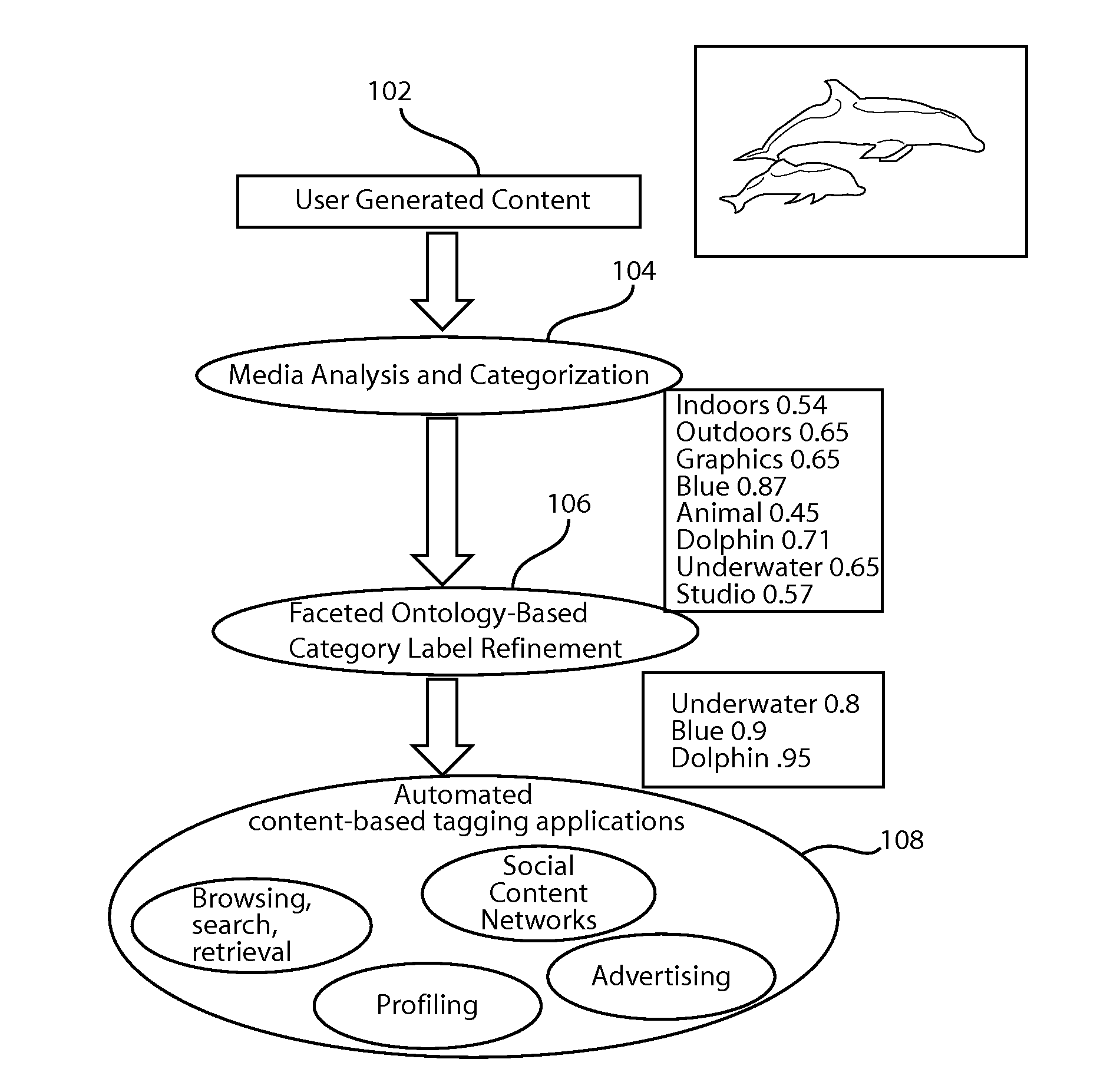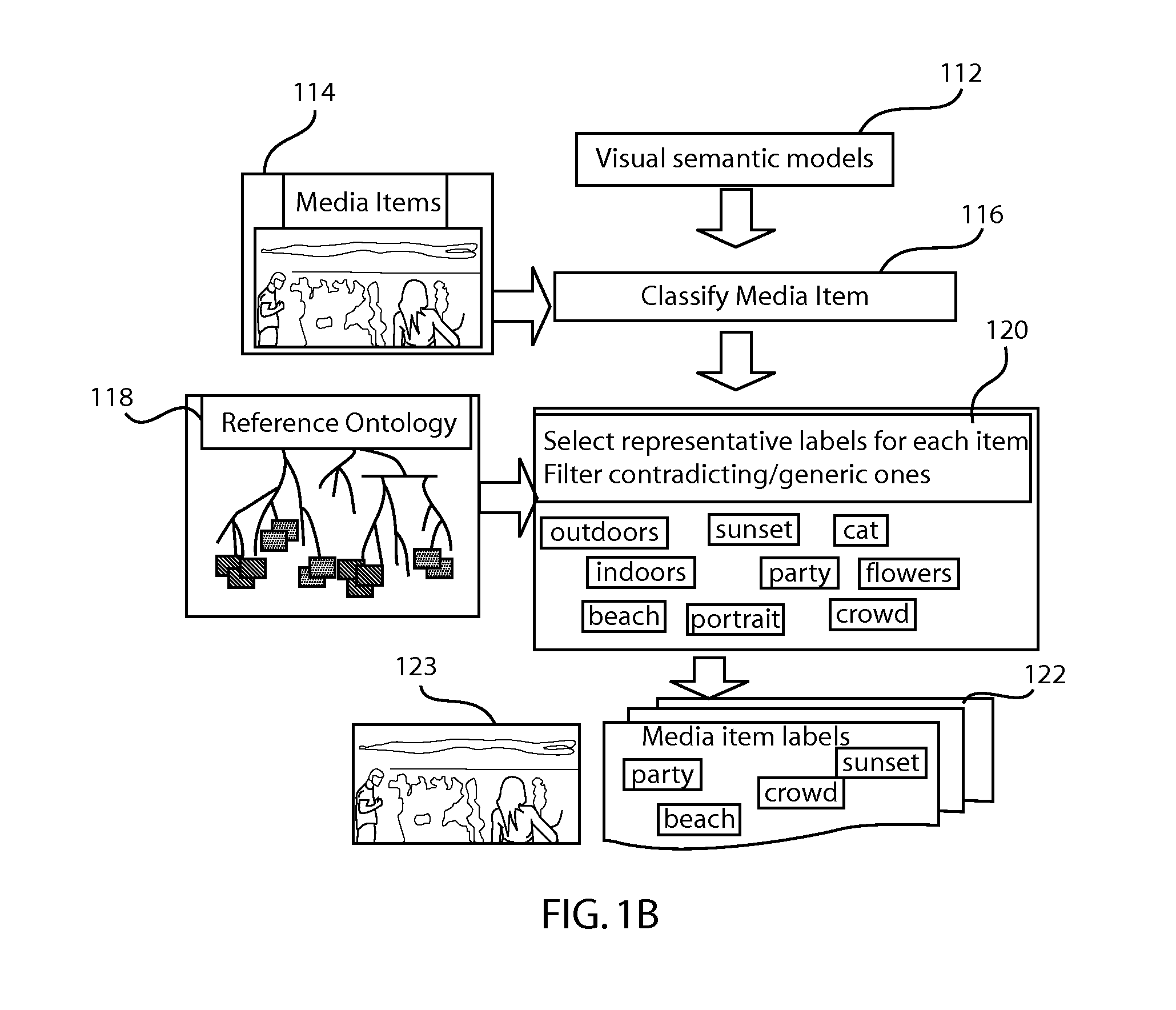Multi-facet classification scheme for cataloging of information artifacts
a classification scheme and information artifact technology, applied in the field of digital artifact classification, can solve the problems of limited multi-faceted taxonomies as tools for categorizing, insufficient tags types for commercial use or objective data description,
- Summary
- Abstract
- Description
- Claims
- Application Information
AI Technical Summary
Benefits of technology
Problems solved by technology
Method used
Image
Examples
Embodiment Construction
In accordance with the present principles, systems and methods are provided that include a set of rules and constraints for the construction and maintenance of multi-facet taxonomies that permit a complete determination of a membership of each artifact with respect to each category. Multifaceted taxonomy can be used in classifying images. Automated semantic classification includes content-based classification of images which assigns labels to a media artifact. A flat list of labels and confidences does not provide real meaning or relations among labels for a particular artifact. Automated tagging of a content item needs to be precise, reliable, diverse, scalable and adaptable.
In accordance with the present principles, systematic organization of visual semantic concepts enables better classification. Relationships among visual semantic concepts are complex ones, and include a great wealth of information. Utilizing context in a classification scheme can enhance visual concepts from se...
PUM
 Login to View More
Login to View More Abstract
Description
Claims
Application Information
 Login to View More
Login to View More - R&D
- Intellectual Property
- Life Sciences
- Materials
- Tech Scout
- Unparalleled Data Quality
- Higher Quality Content
- 60% Fewer Hallucinations
Browse by: Latest US Patents, China's latest patents, Technical Efficacy Thesaurus, Application Domain, Technology Topic, Popular Technical Reports.
© 2025 PatSnap. All rights reserved.Legal|Privacy policy|Modern Slavery Act Transparency Statement|Sitemap|About US| Contact US: help@patsnap.com



